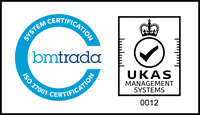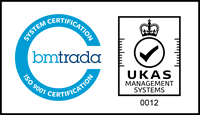Posted on: Monday October 03, 2022

Creating a culture of recognition
In a world where quiet quitting is a thing and the Great Resignation is in full swing, employers are scrambling to find ways to prevent their top talent from leaving.
The good news is that there’s something relatively simple that can be done to help. Create a culture of recognition — a long-time staple of effective management. And with fierce competition for top talent post-COVID-19, such a culture is becoming increasingly essential for retaining and attracting new talent.
What is employee recognition?
Employee recognition is a term that describes the act of publicly acknowledging employees and/or colleagues for who they are and what they do. Employee achievements worthy of recognition can come in many different forms, but some of the main ones are:
- Completing a set goal/KPI
- Going above and beyond Going the extra mile
- Producing an excellent piece of work
- Helping or supporting a key project
- Hitting milestones such as a birthday or long-service anniversary
- Winning an award
Why does it matter?
When employees feel recognised, they tend to stick around longer. According to research by SurveyMonkey, of those surveyed, 63% said recognition would leave them “very unlikely” to seek a new job. This is a double benefit: not only do you retain the talent you already have, but you also save on recruitment costs. To illustrate this, if you’re looking to hire someone at £31,408 (the average UK salary), it’ll cost you approximately £50,000 to recruit, hire and train them in their first 12 months.
Also, recognising employees for their successes and hard work is essential for a healthy work environment. When employees understand the role they play in helping the organisation achieve its purpose, it makes for happier employees, which in turn leads to more positive experiences for customers and clients.
How to create a culture of recognition
There’s no one method to create a culture of recognition, but below are some pointers on getting the ball rolling. By following these steps, will help ensure that recognition is a core part of your company ethos:
-
Encourage and facilitate peer-to-peer recognition. Recognition shouldn’t just come from the top, nor should it be limited to just huge achievements. When team members acknowledge their peers for good work, it creates a healthy environment.
-
Recognition should be frequent and easy to do. The most efficient way to do that is by creating a recognition programme.
-
Be specific. To truly feel valued by the recipient, recognition needs to be more than a generic pat on the back. You need to recognise employees for specific results or behaviours and say why they’re being recognised. Offering specifics makes the feedback much more tangible.
-
Share stories. Don’t keep the hard work a secret. Introduce a 'wall of fame' or similar to acknowledge employee achievements of all sizes. Sharing and celebrating stories of good behaviour or good work encourages an atmosphere of gratitude.
-
Get creative with your recognition. Recognition can take many forms — it doesn’t have to be the standard email or gift voucher. It can be so much more.
When it comes to recognising people for their hard work, there are many ways to cut it. But one thing’s for certain: if you provide your employees with genuine recognition for their work, it will help engage them and maybe keep them working for you for longer.
Want to learn more about creating a healthy work environment that encourages people to do their best? Get advice from your Sage Employee Benefits Account Management Team.
Email: welcome@sageemployeebenefits.co.uk
Phone: 01908 751 211
Are you Tackling the Causes Behind National Sickie Day?
The first Monday of February, often dubbed “National Sickie Day”, has gained notoriety for being the day when employee absences peak. For many organisations, it’s a wake-up call. While it might sound like a light-hearted quip, the reality is that a spike in absences can signal deeper issues within your company.
Posted on: 31 January 2025 by Zach Berwick, New Business Development Director
Salary Sacrifice Schemes: What Are They, and Why Should You Care?
Let’s face it, when you hear “salary sacrifice,” it doesn’t exactly scream “perk of the century,” does it? The term itself sounds like the HR equivalent of eating your greens – good for you, but nobody’s skipping to payroll in excitement. But here’s the twist: salary sacrifice schemes are actually a win-win for both employers and employees, and I’m here to explain why you should take them seriously – before your competitors do.
Posted on: 24 January 2025 by Lisa Hack, Head of Product
New Year, New EVP: Why It’s Time to Refresh Your Employee Value Proposition
And we’re back! January —the month when gym memberships surge, diets are resolutely (if temporarily) adopted, and employees, buoyed by the "new year, new me" mantra, clandestinely update their CVs. It's the annual exodus of talent, as predictable as the Boxing Day sales, leaving employers to wonder: "Was it something we said? Or didn't say?"
Posted on: 10 January 2025 by Charles Ashwell, New Business Development Director







